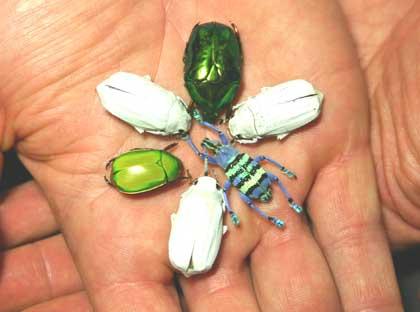Beetle as an example of whiteness

Beetles are generally dark, but Cyphochilus is white and white. So white, the University of Exeter and Imerys Minerals want to use it as a model to produce fine, bright white materials.
The researcher has fascinated the whiteness of this beetle, especially because it is a very thin layer that gives color to the shell (ten times thinner than a hair). To make a comparison, in industrial coatings, so white color requires a double layer thickness.
As the key to the whiteness of the beetle is on the surface of the shell. Actually, the color is provided by pigments or a regular structure. But whiteness is achieved differently, by random dispersion of colors. The beetle shell, seen by electron microscope, is formed by long and flattened scales, with very random three-dimensional structures.
This structure will serve as an example to achieve softer and thinner coatings.
Photo: P. Vukusic, University of Exeter.
Buletina
Bidali zure helbide elektronikoa eta jaso asteroko buletina zure sarrera-ontzian











